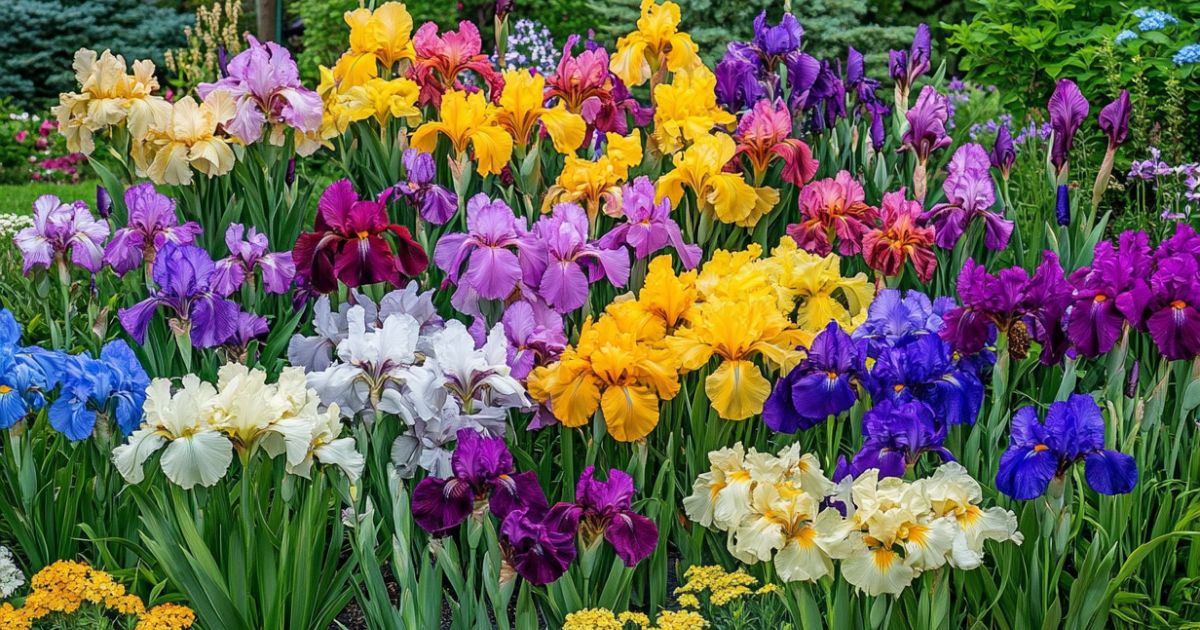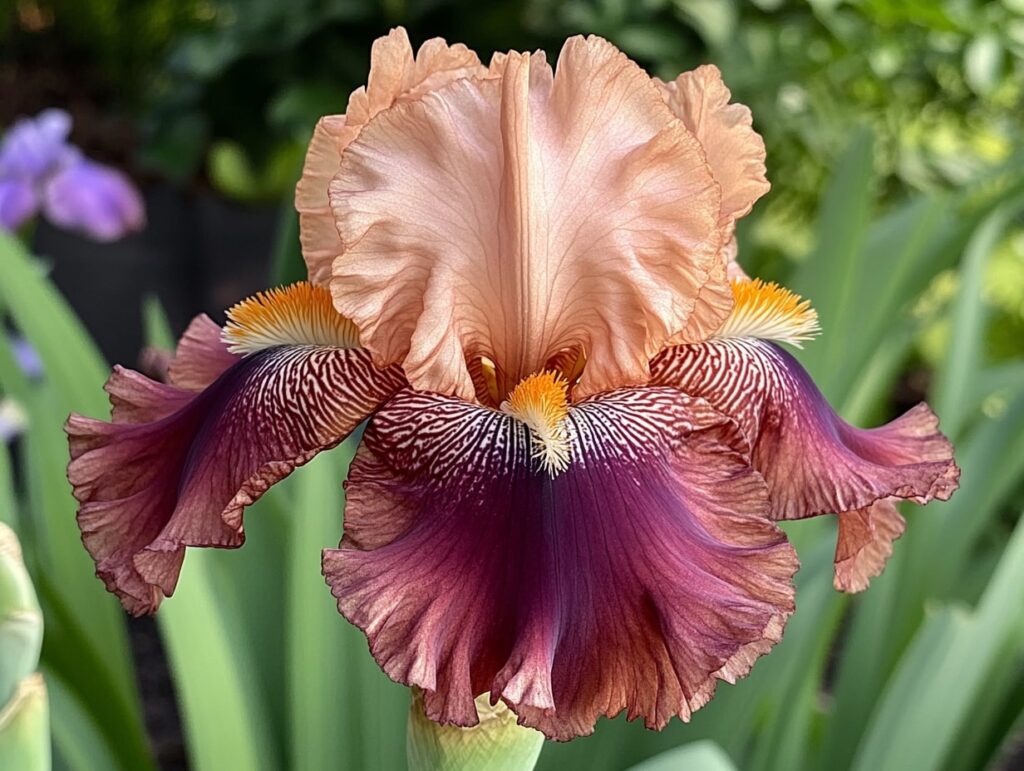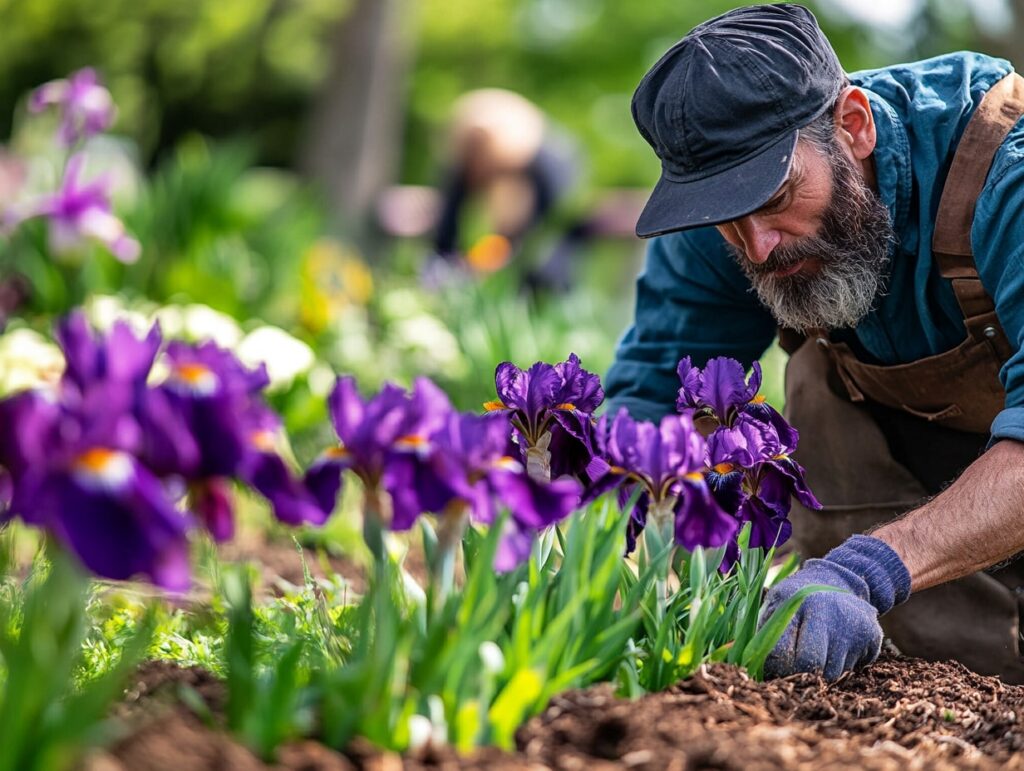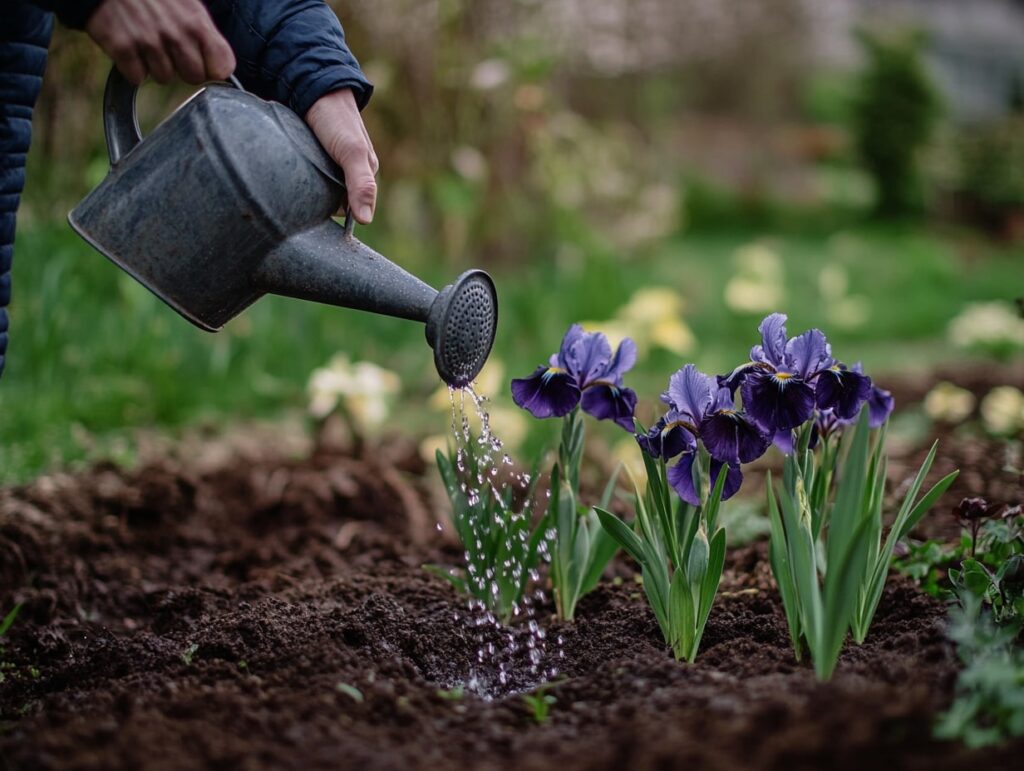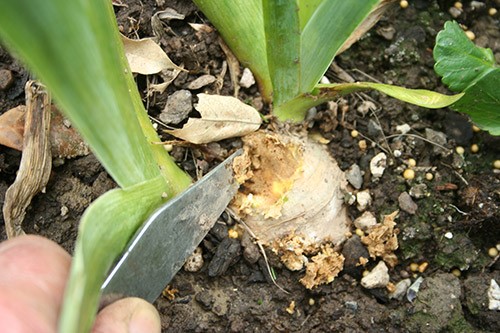If you’re looking to add a splash of color to your garden, irises are a fantastic choice. With their vibrant hues and intricate petals, these beautiful flowers are surprisingly easy to grow.
Whether you’re a seasoned gardener or just beginning, irises can bring joy and elegance to your outdoor space.
Irises thrive with the right care and conditions, and understanding these needs is key to success. You’ll need to find a sunny spot, as irises love soaking up the sun.
Proper soil preparation and watering techniques are also essential to ensure your irises grow healthy and strong.
You’ll be delighted to see your irises bloom year after year with minimal effort. They add not only beauty but also a sense of accomplishment as you nurture them through the seasons. Ready to transform your garden into a vibrant oasis? Let’s get started!
Understanding Irises
Irises are stunning flowers that come in a variety of types, thrive in specific climates, and offer numerous benefits when planted in your garden.
Types of Irises
Irises are categorized mainly into bearded, beardless, and bulbous types.
Bearded irises are known for their fuzzy hairs on the petals.
Beardless irises lack these hairs and often prefer wetter environments.
Bulbous irises grow from bulbs and include varieties like Dutch iris and reticulata iris. Each type has unique care requirements and blooming times.
Ideal Climate for Irises
Irises flourish best in temperate climates. They prefer full sun to partial shade and well-drained soil. Bearded irises are more drought-tolerant, while beardless ones need more moisture. In warmer climates, ensure they get afternoon shade to protect from heat stress.
Benefits of Planting Irises
Irises add elegance and color to any garden with their wide range of shades. They are relatively low-maintenance once established and can act as excellent pollinator-friendly plants, attracting bees and butterflies.
Irises also have a long blooming period, brightening up your garden for weeks.
Preparation for Planting
To grow beautiful irises, it is crucial to select the right location, ensure the correct soil requirements, and plant them at the right time.
Selecting the Right Location
Choosing the right spot is vital. Irises need at least 6 hours of sunlight daily. Full sun helps in blooming effectively. Partial shade can be tolerated but might affect bloom quality.
Avoid areas with heavy shade or overhanging trees. Ensure good air circulation to prevent diseases. Planting on a slight slope or raised beds can help improve drainage.
Soil Requirements
Irises thrive in well-drained soil. Poor drainage can cause rhizomes to rot. Sandy loam or gravelly soil works well. Before planting, test the soil pH. Optimal pH is between 6.0 and 7.0.
Add organic matter like compost to improve soil structure. If your soil is heavy clay, consider mixing in sand or perlite to enhance drainage.
When to Plant
The best time to plant irises is late summer to early fall. This period allows the roots to establish before winter. August through September is ideal in most regions. Planting in the right season ensures healthy growth and blooming.
Early spring planting is possible in colder areas, but avoid it if you can. Irises need time to set roots.
Planting Your Irises
Planting irises involves using specific techniques, ensuring the right depth and spacing, and properly watering after planting. These steps will help you grow beautiful and healthy iris plants.
Iris Planting Techniques
Start by choosing a sunny location with well-drained soil. Irises thrive in areas that receive at least six hours of sunlight daily. Prepare the soil by loosening it to a depth of 12 inches and mixing in compost or well-rotted manure.
Plant the rhizomes horizontally, with the roots spread out underneath. Arrange the rhizomes so the tops are visible at the soil surface. This prevents them from rotting. It’s best to plant irises in late summer to early fall for optimal growth.
Depth and Spacing
Plant iris rhizomes so the top of the rhizome is level with the soil surface. Avoid planting too deep, as it can lead to rot. Space the rhizomes 12 to 24 inches apart to give them room to grow and spread.
If you’re planting multiple rows, maintain at least 18 inches between rows. This spacing ensures good air circulation, reducing the risk of disease. Proper depth and spacing are crucial for healthy irises.
Watering After Planting
Water your irises immediately after planting to help establish the roots. The soil should be moist but not waterlogged. After the initial watering, wait for the top inch of soil to dry out before watering again.
Irises are relatively drought-tolerant, so avoid overwatering. Mulching around the plants can help retain moisture and prevent weed growth. Consistent yet moderate watering will support the healthy growth of your irises.
Ongoing Care and Maintenance
Regular attention to watering, fertilizing, and pruning will ensure your irises remain vibrant and healthy all season long.
Watering Schedule
Irises typically need about 1 inch of water per week. Over-watering can lead to root rot, so it’s essential to keep the soil moist but not soggy.
During dry spells, you might need to water more frequently. Mulching can help retain moisture and regulate soil temperature.
Morning is the best time to water, as it allows foliage to dry during the day, reducing the risk of disease.
Fertilizing Your Irises
Applying a balanced fertilizer in early spring can boost growth. Look for a fertilizer with equal parts nitrogen, phosphorus, and potassium, such as a 10-10-10 mix.
Avoid over-fertilizing, as it can lead to lush foliage at the expense of blooms. A light feeding after flowering can also promote strong growth.
Using a slow-release formula can provide nutrients over a longer period, supporting healthy plants without the need for frequent applications.
Pruning and Deadheading
Regularly remove spent blooms to encourage more flowers and keep the plant looking tidy. Cut the stem down to the base after blooming.
Trim back foliage in the fall to about 6 inches to prepare for winter. Be careful not to remove too much, as the leaves help nourish the plant through photosynthesis.
Deadheading prevents seed formation and redirects the plant’s energy into growth and blooming. Keep an eye out for any diseased leaves and remove them promptly to maintain plant health.
Common Pests and Diseases
When growing irises, you may encounter pests and diseases that can harm your plants. Being able to identify and treat these issues can ensure healthy growth and beautiful blooms.
Pest Prevention and Control
Aphids, iris borers, and slugs are common pests you might find on irises. Aphids can cause leaves to curl and yellow, and they can be controlled with insecticidal soap.
Iris borers are particularly harmful as they burrow into rhizomes. To minimize their impact, keep the garden clean and remove dead leaves. Insecticides specific to borers can be applied in early spring.
Slugs can also be a nuisance. Setting up slug traps or using slug pellets can be effective in controlling them. Regular monitoring and prompt action can keep pest populations under control.
Disease Identification
Irises are susceptible to several diseases, including bacterial soft rot, rhizome rot, and rust.
Bacterial soft rot appears as a foul-smelling, mushy spot on the rhizome. Poor drainage contributes to this issue.
Rhizome rot, often caused by a fungal infection, leads to browning and decaying of the rhizomes. Overcrowded and poorly drained conditions exacerbate this disease.
Rust presents as small, orange pustules on the leaves. High humidity and wet conditions can increase the risk of rust infections.
Treatment of Common Diseases
For bacterial soft rot, remove and destroy affected rhizomes immediately. Ensure the soil is well-drained and avoid overhead watering.
When dealing with rhizome rot, cut out and discard infected parts, then apply fungicides. Enhance air circulation and avoid excessive moisture around the rhizomes.
Rust can be managed by removing infected leaves and using appropriate fungicides. Keep foliage dry by watering at the base of the plants.
Taking proactive steps can help maintain the health and beauty of your irises.
Irises are a wonderful addition to any garden, offering both beauty and ease of care. By selecting the right type, preparing the soil properly, and following the necessary planting and maintenance steps, you can enjoy the vibrant blooms of irises year after year.
With minimal effort, these resilient flowers will reward you with stunning colors and a sense of achievement as they flourish in your garden.
So, if you’re ready to enhance your outdoor space, there’s no better time to start planting irises and watch them transform your garden into a vibrant oasis.
